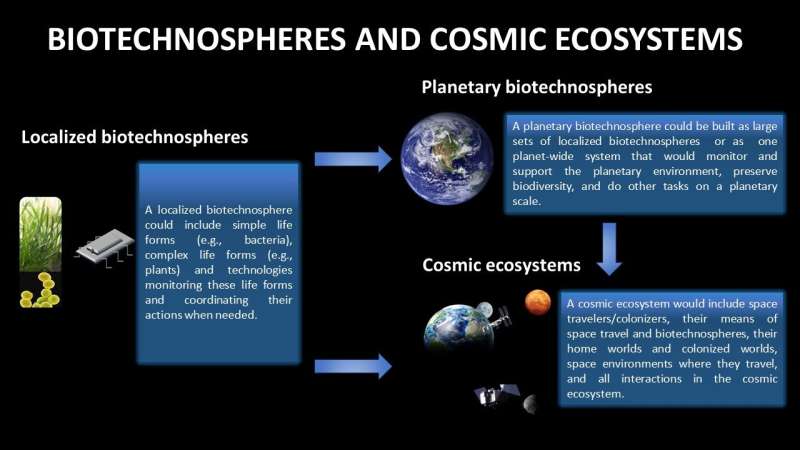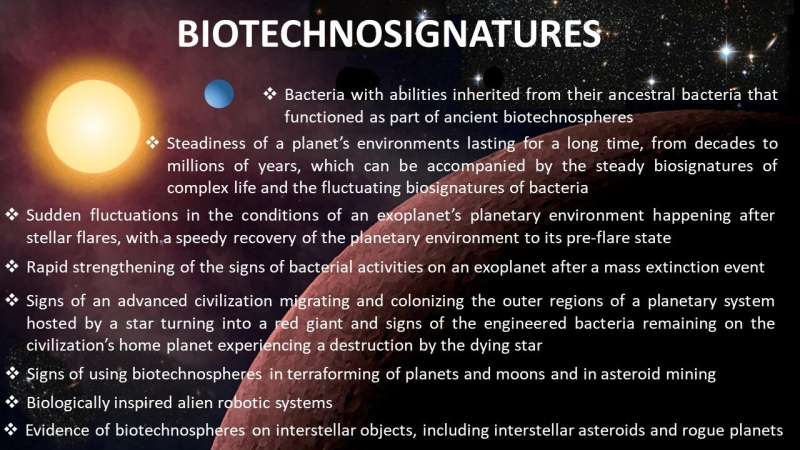by Irina K. Romanovskaya
To safeguard Earth’s biosphere, scientists have turned toward Artificial Intelligence (AI) with the hope that it may help to protect biodiversity. Yet this hope has been challenged by AI’s appetite for water and energy rooted in AI’s need for big data, iterative computations and algorithmic perfection. For example, during its learning phases, GPT-3 consumes energy at a scale approaching hundreds of megawatt-hours.
The foremost strategy to address this challenge involves optimizations targeting AI’s data utilization, software, and hardware. Also, the fusion of in vitro neural networks with in silico computing could create “synthetic biological intelligence” and empower energy-efficient information processing. Synthetic gene networks could be used in computing, hinting at the prospect of efficient bio-artificial intelligence.
I consider another approach involving collaboration of the intelligence of technologies and the intelligence of bacteria also known as microbial intelligence. Bacteria can collectively learn and remember, solve problems, make decisions, communicate, adapt to changing environments, and preserve intelligent traits in their collective genomic memory. Their collective intelligence could help AI with safeguarding the planetary environment.
Genetically engineered and synthetic bacteria could shoulder some tasks that would otherwise fall upon the shoulders of AI. They could gather and process information about the environment, select responses designed to preserve and restore Earth’s ecosystems. Designed as “interpreters,” micro-technologies could detect and decode bacterial signals relevant to their environments and then transmit the decoded signals to AI.
AI could analyze that information and use the technology-interpreters to coordinate the bacteria’s response to environmental changes. For example, the bacteria could remove plastic debris, draw down atmospheric greenhouse gases, or help to produce molecular hydrogen that could be used as fuel.
So while contemporary debates focus on interactions between AI and human intelligence, there may be profound outcomes of AI interfacing with microbial intelligence. The harmonious collaboration of AI and microbial intelligence could bring us closer to the advent of planetary intelligence. The notion of planetary intelligence was previously investigated by Adam Frank, David Grinspoon and Sara Walker in their research paper, “Intelligence as a planetary-scale process.”
I use the term biotechnosphere to describe technologies and life forms working together in a coordinated manner toward common goals. For example, a localized biotechnosphere could include genetically engineered bacteria performing bioremediation of a nuclear power plant’s radioactive waste and technologies monitoring and coordinating the bacteria’s activity. Machine learning and AI could operate in more advanced biotechnospheres.
Our current immature technosphere often harms Earth’s environments and the biosphere. However, scientists seek ways to advance the technosphere to its mature state. With the help of the mature technosphere, a planetary biotechnosphere could emerge in the form of large sets of localized biotechnospheres or as one planetwide system. The planetary biotechnosphere could monitor and preserve the planetary environment and the biosphere. Biotechnospheres could also become part of cosmic ecosystems when assisting with life support and resource utilization for space missions, terraformation of other cosmic worlds and asteroid mining.

Biotechnospheres and cosmic ecosystems. © Irina K. Romanovskaya
Considering that bacteria have survived several mass extinctions that obliterated a multitude of species on our planet, integrating bacteria into biotechnospheres would be a prudent contingency plan. It could prove invaluable in the task of restoring Earth’s environments, especially in the aftermath of cataclysmic events. Hypothetical advanced alien civilizations could similarly harness the adaptability of bacteria in their biotechnospheres.
I propose that to be peacefully integrated with a planet, biotechnospheres would include bacteria with certain abilities relevant to their use in the biotechnospheres, such as the abilities to perform specific tasks; to evade an exchange of genetic information with the “natural” bacteria of the planet; to avoid bacterial wars and the influence of viruses; to switch between dormant and active states and execute other actions in response to artificial stimuli; to demonstrate collective properties as part of a bigger system; and to quickly self-repair mutations.
And what if we are not the only civilization that would think of using such bacteria in biotechnospheres? Suppose another nonhuman civilization existed on Earth in the distant past, perhaps millions of years ago as is discussed by Gavin Schmidt and Adam Frank in their Silurian hypothesis. If the ancient nonhuman civilization created biotechnospheres using bacteria, the descendants of those bacteria could endure to this very day and preserve the abilities of the ancestral bacteria relevant to the ancient biotechnospheres. A discovery of such organisms could stand as evidence of the ancient non-human civilization.
The hypothetical ancient nonhuman civilization could build spacefaring technologies, just as humankind builds spacecraft and space probes. In their migration hypothesis, Milan Ćirković and Robert Bradbury considered how, in the future, spacefaring post-biological computing entities created by humans would migrate to the outer regions of the solar system. Could the technologies of the hypothetical ancient nonhuman civilization do something similar?

Biotechnosignatures. © Irina K. Romanovskaya
To address these possibilities, I propose, in an article published in the International Journal of Astrobiology, the cosmic descendants hypothesis, which posits that if an industrial non-human civilization existed on Earth, Mars or Venus in the distant past, and it created spacefaring intelligent machines as well as bacteria working in concert with technologies, then the descendants of the machines and the bacteria could outlast that civilization and currently exist in our solar system.
The descendants of the bacteria could exist on Earth, Mars and elsewhere in the solar system (for example, if biotechnospheres with bacteria were used in asteroid mining and terraformation of planets and moons). The spacefaring intelligent machines could settle mostly beyond the orbit of Saturn, away from harmful solar storms. The machines could mine moons and asteroids and use engineered or synthetic bacteria in various applications.
Biotechnospheres can produce observables and artifacts, which I coin as “biotechnosignatures.” For example, the descendants of the bacteria engineered by the hypothetical ancient nonhuman civilization would be a biotechnosignature of that civilization.
Advanced civilizations could deploy biotechnospheres in other planetary systems. I propose several types of biotechnosignatures that they could produce.
This story is part of Science X Dialog, where researchers can report findings from their published research articles. Visit this page for information about ScienceX Dialog and how to participate.
More information:
Irina K. Romanovskaya, Planetary biotechnospheres, biotechnosignatures and the search for extraterrestrial intelligence, International Journal of Astrobiology (2023). DOI: 10.1017/S1473550423000204
Irina K. Romanovskaya is a graduate of Rice University (Houston, TX) and a professor of physics and astronomy at Houston Community College.
Citation:
Biotechnospheres as part of planetary intelligence and the search for extraterrestrial civilizations (2023, September 27)



